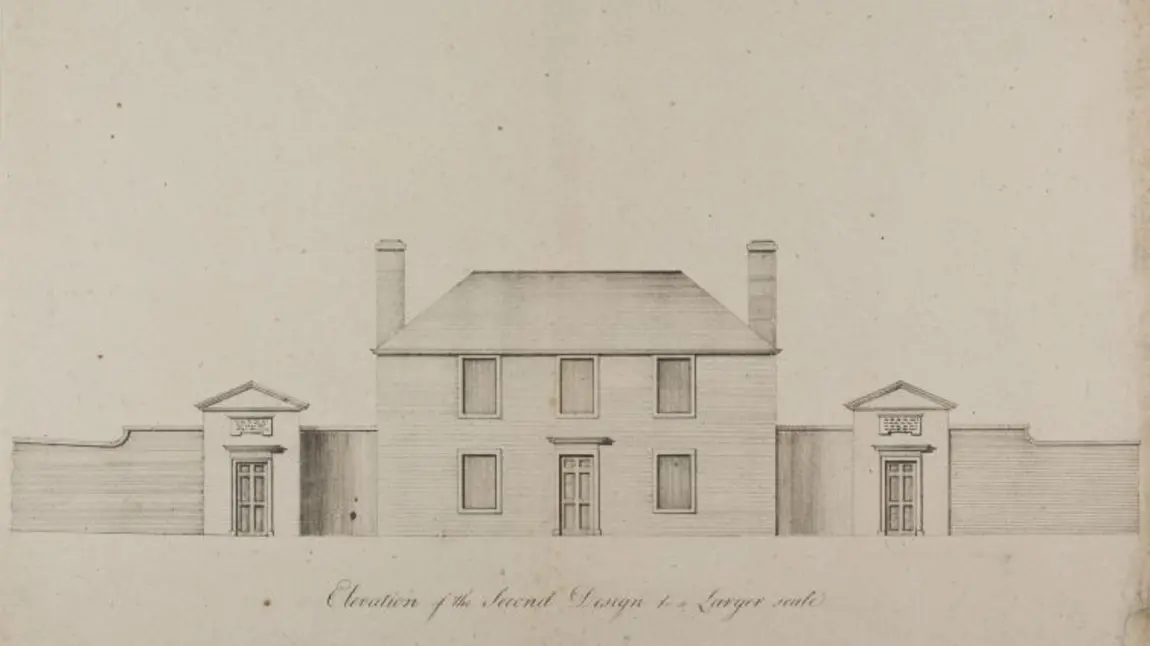A major step forward for the Botanic Cottage

News that the garden has received planning permission to rebuild the Botanic Cottage, its original centre of learning, within the garden means fund raising efforts can also be stepped-up a gear. The ultimate goal is to see the cottage start welcoming its 21st-century students within two years.
After RBGE transferred the plant collections of its Leith Walk site to Inverleith in 1820, the cottage gradually fell into a state of disrepair, before being faced with demolition in 2008. However, tireless campaigning by local groups, significantly the Friends of Hopetoun Gardens, saved the building and a small grant was secured from the Heritage Lottery Fund (HLF) to take it down stone by stone. In 2009 the Botanic Cottage Trust was formed to secure a new future for the cottage at Inverleith. During this process, it was found to have immense historical and heritage value, with fascinating connections to the construction of the New Town and the Scottish Enlightenment.
“This is an important step forward”, said Dr Ian Edwards of RBGE’s Learning Team. “We are very grateful to the community who first alerted us to plans to demolish the cottage and who did such a fantastic job that enabled us to preserve all the pieces. Now the fun begins, as we finalise plans to put it back together and create a building which will be both beautiful and fulfil a really important role at the heart of a growing community.
“In recent years we have been steadily expanding our engagement with the local community by getting more people involved in practical food growing. The Botanic Cottage will provide a base from which this activity can continue to reach new groups and individuals who want to feed themselves and their families and reduce their own carbon footprint. As an organisation we also seek to limit our impact on the environment and giving the original Botanic Cottage a new lease of life is the ultimate recycling solution.”
New educational activities provided at the cottage will range from training workshops in traditional skills for young apprentices; interactive and horticulture-themed projects for local schools; history and heritage-related events and exhibitions for the public and a volunteer programme. From 1764 to 1821, the Botanic Cottage had been the “gateway” to the Leith Walk site. Here, Professor John Hope, a botanist of international renown and a leading character in the Scottish Enlightenment, taught students about the emerging science of botany. With crucial backing from HLF, the project team will now proceed towards starting the rebuild, in RBGE’s Demonstration Garden, in spring 2014, with the aim of opening the centre in 2015.
Colin McLean, Head of Heritage Lottery Fund Scotland, said: “This cottage has connections to eminent architects and scientists and was where enlightened botanical teaching of the late 18th and early 19th century took place. We are delighted to see the progressive journey towards the fruition of a project which will not only preserve the cottage’s rich heritage but will see it once again as a thriving learning space; inspiring young people and community groups as they explore the wonders of our natural world.”
Notes to editors
The Botanic Cottage was designed by John Adam, eldest of the Adam brothers, and extended in the 1780s by James Craig, author of the 1767 plan for the New Town of Edinburgh. The cottage provided accommodation for the Head Gardener, with John Hope’s lecture room on the upper floor. Many of Hope’s lecture notes and illustrations still survive, as does an extensive archive detailing the craftsmen who built the cottage.
The importance of the structure was brought to light by members of the Friends of Hopetoun Crescent Garden, part of the old Leith Walk Garden, in 2007. That group, working in association with RBGE, arranged for the building to be recorded in detail and for its stones and timbers to be carefully numbered and stored. After demolition, the Botanic Cottage Trust, chaired by Lord Hope, was formed to secure a new future for the building.
Architects Simpson and Brown, who specialise in heritage projects, are leading the design process. The upstairs room is to be recreated as a community engagement and exhibition space. The downstairs space will be provide a classroom, kitchen, storage space and toilets. Outside, hidden by a single-storey wall at each end, there is space for a glasshouse, potting shed / tool store, picnic benches and a plot to plate cooking area for school children. A masterplan for the use and design of the Teaching Garden - the area behind the large beech hedge referred to as the Demonstration Garden - will be led by landscape architects ERZ.
A second-round Heritage Lottery Fund application of £1.6million to rebuild the historic Botanic Cottage was accepted in March 2013. Match funding will be provided by the Royal Botanic Garden Edinburgh and other potential sources are being investigated.
The Royal Botanic Garden Edinburgh (RBGE) is a leading international research organisation delivering knowledge, education and plant conservation action in more than 80 countries around the world. In Scotland its four gardens at Edinburgh, Benmore, Dawyck and Logan attract nearly a million visitors each year. It operates as a non departmental public body established under the National Heritage (Scotland) Act 1985, principally funded by the Scottish Government. It is also a registered charity, managed by a Board of Trustees appointed by Ministers. Its mission is 'exploring and explaining the world of plants for a better future.' To learn more please visit the Royal Botanic Garden Edinburgh's website.
Further information
For further information, images and interviews please contact Shauna Hay on 0131 248 2900 / 07824 529 028.